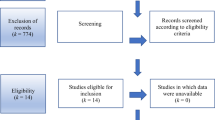Abstract
This evaluation explores the effectiveness of school-based mentoring as a universal prevention strategy. The impact of mentoring on students displaying risk factors is also addressed. The evaluation of YouthFriends, a school-based mentoring program, employed a pretest-posttest control group design. Students (n = 170) across five school districts provided data on eight dependent variables. At posttest, there was a statistically significant difference favoring YouthFriends over controls on sense of school membership. In addition, for students who had low scores at baseline, results indicated a statistically significant improvement unique to YouthFriends on community connectedness and goal-setting. Analyses of students’ academic performance also indicated a positive effect for those YouthFriends who had low grades at baseline.
Editors’ Strategic Implications: Important lessons are provided for school administrators and mentoring program staff and evaluators. As a universal prevention program, school-based mentoring may produce few (and small) short-term effects. A greater understanding of the effects of dosage and quality of the mentoring is needed as we seek to evaluate the efficacy of school-based mentoring across a variety of student risk levels.
Similar content being viewed by others
References
Battistich, V., & Horn, A. (1997). The relationship between students’ sense of their school as a community and their involvement in problem behaviors. American Journal of Public Health, 87(12), 1997–2004.
Blum, R. W., & Rinehard, P. M. (1997). Reducing the risk: Connections that make a difference in the lives of youth. Minneapolis, MN: University of Minnesota, Division of General Pediatrics and Adolescent Health.
Campbell, D. T., & Stanley, J. D. (1966). Experimental and quasi-experimental design for research. Chicago: Rand-McNally.
Dondero, G. M. (1997). Mentors: Beacons of hope. Adolescence, 32, 881–886.
Dryfoos, J. G. (1997). The prevalence of problem behaviors: Implications for programs. In R. P. Weissberg, T. P. Gullotta, R. L. Hampton, B. A. Ryan, & G. R. Adams (Eds.), Enhancing children’s wellness (pp. 17–46). Thousand Oaks, CA: Sage.
DuBois, D. L., Holloway, B. E., Valentine, J. C., & Cooper, H. (2002). Effectiveness of mentoring programs for youth: A meta-analytic review. American Journal of Community Psychology, 30, 157–198.
Flaxman, E., & Asher, C. (1992). Mentoring in action: Prevalence and prevention. New York: Oxford University Press.
Hawkins, J. D., Catalano, R. F., & Miller, J. Y. (1992). Risk and protective factors for alcohol and other drug problems in adolescence and early adulthood: Implications for substance abuse prevention. Psychological Bulletin, 112, 64–105.
Karcher, M. (in press). Measuring adolescent connectedness: Five validation studies.
LoSiuto, L., Rajala, A. K., Townsend, T. N., & Taylor, A. S. (1996). An outcome evaluation of Across Ages: An intergenerational mentoring approach to drug prevention. Journal of Adolescent Research, 11, 116–129.
McPartland, J. M., & Nettles, S. M. (1991). Using community adults as advocates or mentors for at-risk middle school students: A two-year evaluation of Project RAISE. American Journal of Education, August, 568–586.
Office of Juvenile Justice and Delinquency Prevention. (1998, December). Juvenile Mentoring Program: 1998 Report to Congress. Washington, DC: U.S. Department of Justice.
Portwood, S. G., Ayers, P. M., Wise, D. L., Booth, K. M., Parker, L. C., & Smith, M. L. (2001). YouthFriends: Results of the 2000–2001 Annual Survey. Kansas City, MO: Authors.
Rhodes, J. E. (2002). Stand by me: The risks and rewards of mentoring today’s youth. Cambridge, MA: Harvard University Press.
Royse, D. (1998). Mentoring high-risk minority youth: Evaluation of the Brothers project. Adolescence, 33(129), 145–158.
Simons-Morton, B. G., Crump, A. D., Haynie, D. L., & Saylor, K. E. (1999). Student–school bonding and adolescent problem behavior. Health Education Research, 14, 99–107.
Sipe, C. (1996). Mentoring: A synthesis of P/PV’s research: 1988–1995. Philadelphia: Public/Private Ventures.
Slicker, E. K., & Palmer, D. J. (1993). Mentoring at-risk high school students: Evaluation of a School-Based Program. The School Counselor, 40(5), 327–334.
Solomon, D., Watson, M., Battistich, V., Schaps, E., & Delucchi, K. (1996). Creating classrooms that students experience as communities. American Journal of Community Psychology, 24(6), 719–748.
Taylor, A. S., & Dryfoos, J. G. (1998/1999). Creating a safe passage: Elder mentors and vulnerable youth. Generations, 22, 43–49.
U.S. Department of Health and Human Services. (2001). Youth violence: A report of the Surgeon General. Retrieved April 14, 2003, from http://www.surgeongeneral.gov/library/ youthviolence/report/html
Walker, H. M., Horner, R. H., Sugai, G., Bullis, M., Sprague, J. R., Bricker, D., et al. (1996). Integrated approaches to preventing antisocial behavior patterns among school-age children and youth. Journal of Emotional and Behavioral Disorders, 4, 194–209.
Author information
Authors and Affiliations
Corresponding author
Rights and permissions
About this article
Cite this article
Portwood, S.G., Ayers, P.M., Kinnison, K.E. et al. YouthFriends: Outcomes from a School-Based Mentoring Program. J Primary Prevent 26, 129–188 (2005). https://doi.org/10.1007/s10935-005-1975-3
Issue Date:
DOI: https://doi.org/10.1007/s10935-005-1975-3




